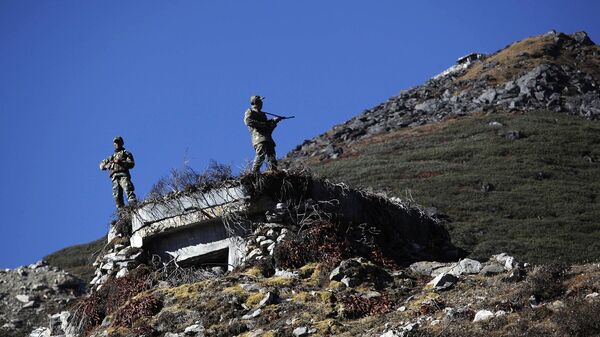Pyotr Topychkanov, an analyst with the Institute of World Economics and International Relations of the Russian Academy of Sciences, told Sputnik China that despite the situation in the Himalayan region developing in a predictable manner, the "possibility of military clashes between Indian and Chinese units is increasing" under this predictability.
Earlier, The Times of India reported that the Indian government in considering building 50 new border outposts along the 3,488-kilometer-long Indian-Chinese border. According to the report, four additional battalions numbering over 4,000 troops would be deployed to the border area. The measure is expected to decrease tensions and improve coordination in the region.
Yang Bian, a researcher at the Communication University of China, said that India’s military activities could create new threats for China.
"Despite the fact that the border standoff between China and India has been settled for now, there is still a territorial dispute. India has been increasing its military presence in the region and building more border outposts is part of this plan," Yang said.
"Moreover, the situation in the region remains unstable and more Indian border outposts would increase the threat of India taking control over Chinese territory," the analyst said.
Currently, there are 176 outposts on the India-China border and the Indian government has for a significant time considered building up its military flanks against China. In particular, the initiative includes deployment of troops capable of fighting in mountainous areas in the border region as well as the deployment of advanced weapons systems, including domestically-produced AKASH anti-aircraft missiles.
The plan to build new border outposts is apparently part of the strategy, in particular taking into account the fact that the measure was announced three months after a standoff between Indian and Chinese troops in Doklam.
"India wanted to show China that its actions comply with its national interests and that there is an understanding on the matter between the Indian government and Washington. The Indian strategy [on China] reflects US policy, including setting up a network of military bases around China and deterring Beijing by all means available. Of course, this could spark a tough response by China," the analyst explained.
According to The Associated Press, Tillerson’s trip to Afghanistan, Pakistan and India was aimed at promoting Washington’s new strategy for South Asia. India does not want to be part of any military alliance, especially of a hypothetical US-led alliance against China. However, India has limited military resources for independent actions in the Himalayan region and in the Indian Ocean, and could consider joining US efforts to deter China.



